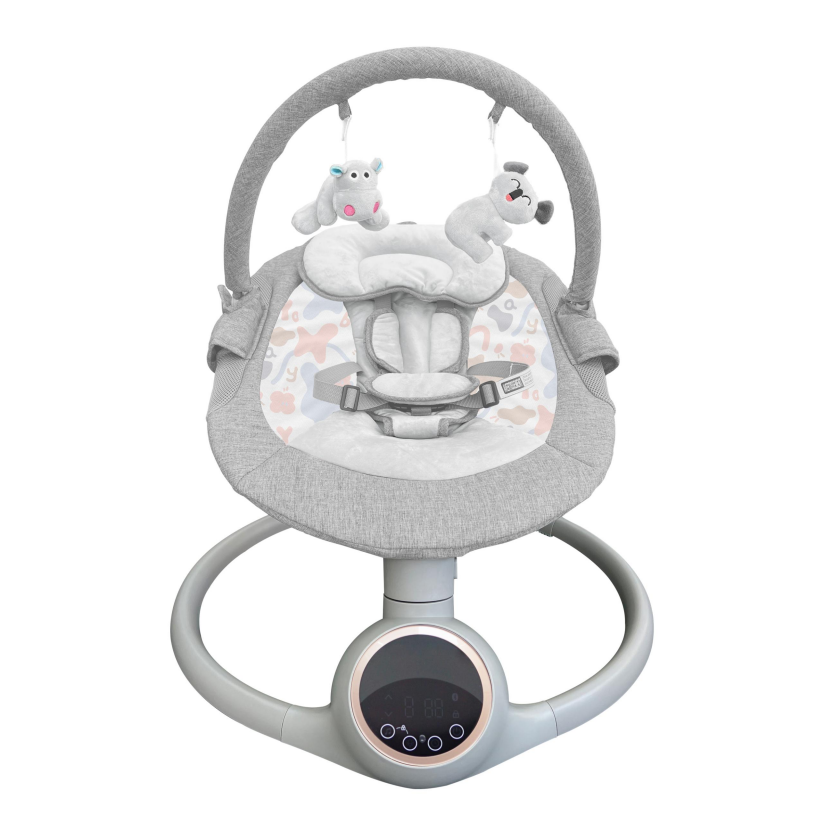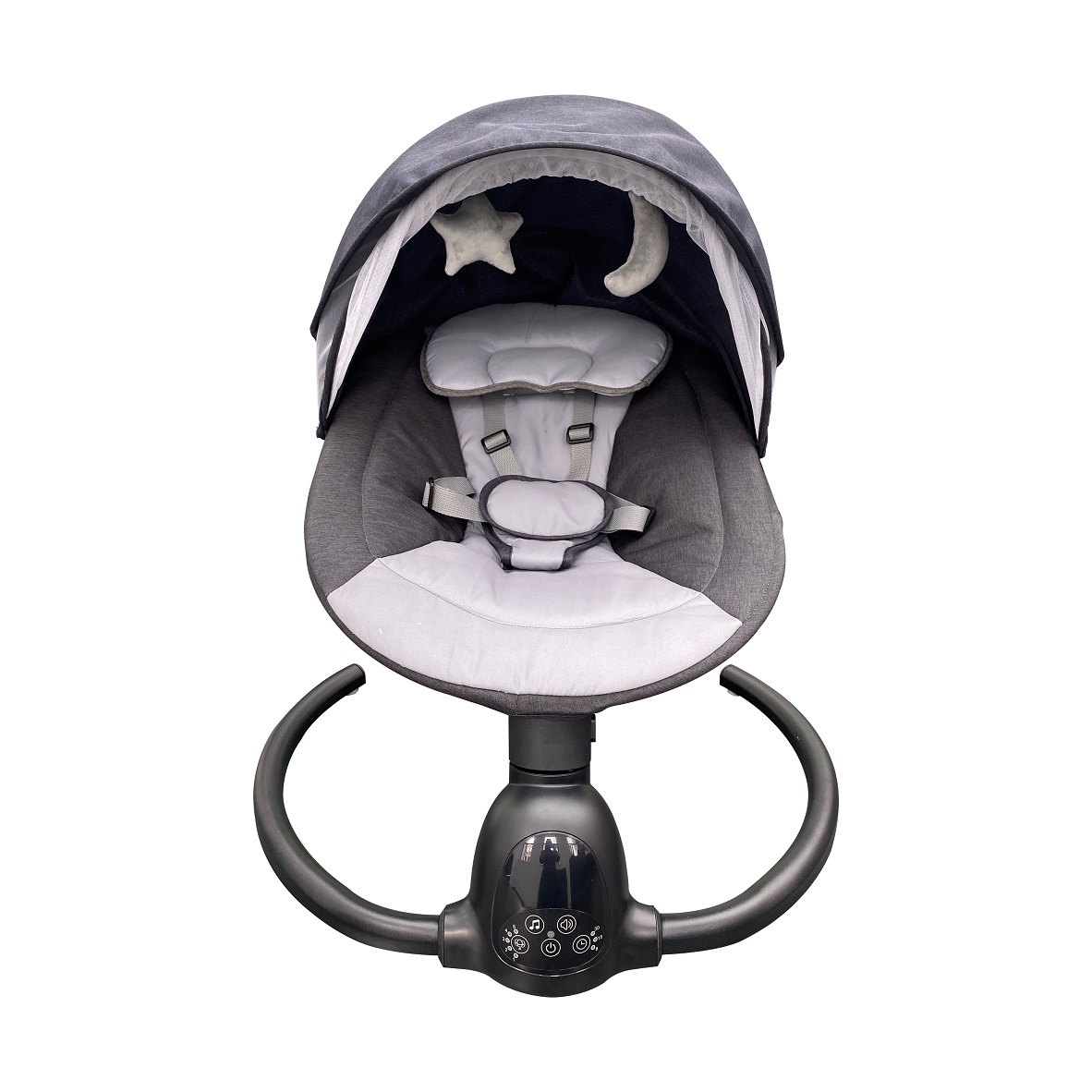Babies can typically start using swings from a very young age, but the appropriate age for swing use may vary based on the specific design and features of the swing as well as the developmental stage of the baby. Here are some general guidelines:
Newborns:
Many baby swings are designed to accommodate newborns. Look for swings with a fully reclined position, proper head and neck support, and a secure harness. Always follow the manufacturer's guidelines regarding the minimum weight and age requirements.
Weight and Age Recommendations:
Pay attention to the weight and age recommendations provided by the manufacturer of the swing. Different swings may have varying weight limits, and it's crucial to ensure that your baby falls within the specified range.
Ability to Hold Head Up:
As a general rule, babies should be able to hold their heads up on their own before using a swing. This developmental milestone is essential for ensuring that the baby can maintain a safe and comfortable position in the swing.
Supervised Use:
Regardless of age, it's important to always supervise your baby while they are in the swing. This is especially crucial for younger infants who may not have developed the strength and control to reposition themselves.
Observe Baby's Comfort:
Pay attention to your baby's cues and comfort level. If the baby seems content and secure in the swing, it's likely a suitable time to use it. If the baby appears uncomfortable or unsettled, discontinue use and try again at a later time.
Follow the Manufacturer's Guidelines:
Always follow the specific guidelines provided by the manufacturer of the baby swing. This includes information on age, weight limits, proper assembly, and any other safety considerations.
Remember that every baby is unique, and what works for one may not work for another. Some babies may enjoy the soothing motion of a swing from the early weeks, while others may take some time to adjust. It's essential to introduce the swing gradually and in a manner that ensures the baby's safety and comfort. If you have any concerns or questions about when to start using a swing, consult with your pediatrician for personalized advice based on your baby's individual development.
While a newborn swing bed can be a helpful tool for soothing and entertaining a baby, it is generally not recommended for prolonged or unsupervised sleep. The American Academy of Pediatrics (AAP) advises against letting baby sleep in a swing, bouncer, car seat, or similar devices for extended periods, especially if it is not designed for safe sleep.
Here are some key points to consider:

Risk of SIDS:
Prolonged use of swings for sleeping may increase the risk of sudden infant death syndrome (SIDS). The upright position and constraints of a swing can compromise a baby's airway and breathing, especially if the head falls forward.
Flat Sleeping Surface:
The AAP recommends that babies sleep on a firm, flat surface to reduce the risk of SIDS. The incline of a swing does not provide the same level of support and safety as a proper crib or bassinet.
Supervised Naps Only:
If your baby falls asleep in a swing, it's advisable to move them to a flat and safe sleeping surface as soon as possible. Supervised naps in a swing during the day are generally acceptable, but overnight sleep should be in a crib or bassinet.
Follow the Manufacturer's Guidelines:
Always follow the personalized baby gear manufacturer's guidelines for the specific baby swing you are using. They typically provide information on safe usage, including duration and supervision recommendations.
Establish a Safe Sleep Environment:
Create a safe sleep environment for your baby by placing them on their back to sleep, ensuring a firm mattress, and avoiding soft bedding, pillows, and toys.
Transition to Crib:
As your baby grows, it's important to transition them to a crib or bassinet for overnight sleep. This helps establish safe sleep habits and reduces the risk of potential health concerns associated with prolonged swing use.
If you have concerns or questions about your baby's sleep environment, it's always a good idea to consult with your pediatrician. They can provide personalized advice based on your baby's specific needs and development. Safety and adherence to sleep guidelines are crucial to promoting a healthy and secure sleep environment for your baby.
Using a baby swing safely is essential to ensure your baby's well-being. Here are guidelines for safely using a baby swing:
1. Read the Manual:
Start by reading and thoroughly understanding the manufacturer's manual that comes with the baby swing. This provides crucial information on assembly, usage, and safety guidelines specific to that model.
2. Age and Weight Limits:
Adhere to the recommended age and weight limits specified by the manufacturer. Different swings have varying weight capacities, and using the swing beyond its specified limits can compromise safety.
3. Assemble Properly:
Follow the manufacturer's assembly instructions precisely. Ensure that all parts are securely fastened, and there are no loose or missing components. Regularly check for wear and tear and address any issues promptly.
4. Place on a Stable Surface:
Position the baby swing on a flat, stable surface. Ensure that it is free from hazards, such as cords, sharp objects, or furniture edges. Avoid placing the swing near stairs or areas where the baby could potentially fall.
5. Secure Harness Correctly:
Always use the provided safety harness or straps when placing your baby in the swing. Ensure that the harness is securely fastened and adjusted to fit snugly but comfortably. Regularly check for any signs of wear or damage to the harness.

6. Supervise at All Times:
Never leave your baby unattended while in the swing. Supervise them closely, especially during use. This is crucial for ensuring their safety and preventing any potential accidents.
7. Use in Recommended Positions:
Follow the manufacturer's guidelines for recommended recline positions based on your baby's age and developmental stage. Newborns often require a more reclined position with proper head and neck support.
8. Limit Usage Time:
Avoid allowing your baby to spend extended periods in the swing. Prolonged use may increase the risk of potential health issues. Use the electric bassinet swing as a tool for short periods of soothing or entertainment.
9. Check Batteries:
If the baby swing is battery-operated, regularly check and replace the batteries as needed. Ensure that the swing operates smoothly, and address any malfunctions promptly.
10. Avoid Sleep for Extended Periods:
- While supervised naps in a swing are generally acceptable, it's advisable not to let your baby sleep in the swing for extended periods, especially overnight. Follow safe sleep guidelines and transition your baby to a crib or bassinet for nighttime sleep.
11. Transition Gradually:
- As your baby grows, gradually transition them to other forms of entertainment and play. Ensure that the swing remains appropriate for their age and developmental stage.
By following these guidelines and prioritizing your baby's safety, you can enjoy the benefits of a baby swing as a tool for soothing and entertaining your little one. Always consult with your pediatrician if you have specific concerns or questions about using a baby swing safely.